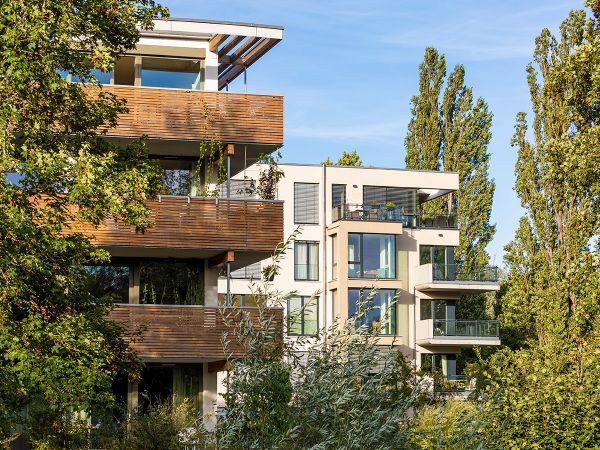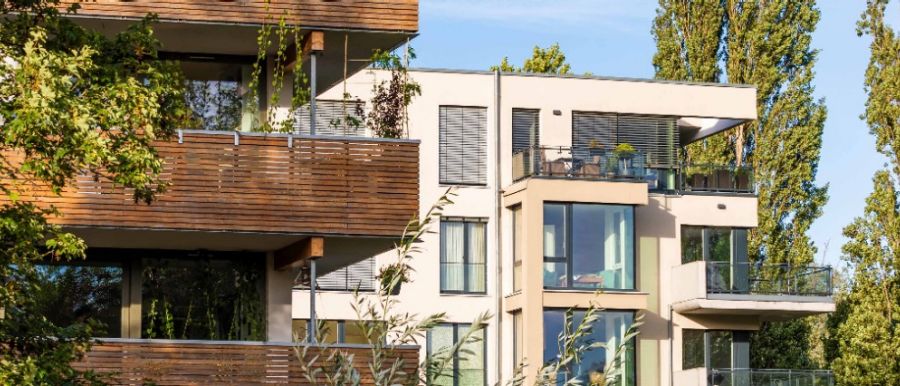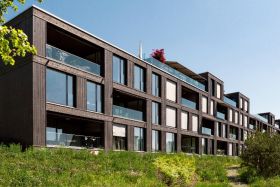

The real estate industry has a responsibility to reduce greenhouse gas emissions quickly and significantly. The revised ewz white paper ‘Net zero for real estate: an opportunity for forward-looking investment’ shows that this is already possible today. It offers clients and investors a knowledge base and a set of guidelines.
The burning of fossil fuels is the main cause of the increase in greenhouse gases (GHG) in the Earth’s atmosphere. To stop global warming or at least slow it down, we need to reduce GHG emissions to net zero as quickly as possible. This means that at the bottom line, human activities would have no impact on the proportion of greenhouse gases in the Earth’s atmosphere.
What constitutes a net-zero building?
If a building is planned, built and operated in line with the net-zero target, all direct and indirect emissions must be taken into account. A project launched by the federal government distinguishes between net-zero buildings and net-zero-ready buildings. A net-zero building generates minimal GHG emissions over its entire life cycle and reduces the remaining emissions through negative emissions – in other words, greenhouse gases that are removed from the atmosphere and stored permanently. In contrast, with net-zero-ready buildings, the negative emissions are only stored temporarily but can later be transferred to a long-term storage system.
SIA standard 390/1, known as the ‘Climate Path,’ has been in place in Switzerland as a tool for builders and planners since early 2025. It defines what net zero means for buildings from a lifecycle perspective. There is a basic target value and an ambitious target value for GHG emissions from construction, operation, and mobility for use categories such as residential, offices, or schools. The requirements are demanding, but they are achievable with today’s construction technology.
A building causes GHG emissions long before it goes into operation. These indirect emissions originate from the production of building materials and their transport to the construction site. There is a particularly significant impact from the production of construction materials such as concrete, bricks and steel, which still cause extensive GHG emissions.
During the operational phase of a building, GHG emissions are mainly generated by the energy supply (heating, cooling, ventilation, lighting). For renewable heating systems, the origin of the electricity has a major impact on GHG emissions. Swiss electricity is associated with relatively low GHG emissions, but we often have to import electricity generated from fossil fuels, especially in the winter months.
Even at the very end of a property’s service life, the dismantling and disposal or recycling of building materials cause additional GHG emissions. Compared to construction and operating emissions, however, their share is significantly lower.
If the right course is set from the beginning via suitable building concepts, construction, material selection and building services, significantly reducing GHG emissions is already possible today. Building owners and planners should focus on the following action areas.
Renovation or new build?
In a renovation, large parts of the building fabric, such as walls, ceilings, foundations and roof, are retained, which usually results in significantly lower GHG emissions than a replacing an existing building with a new one. However, not all buildings are suitable for further construction – project-specific assessment is essential.
Architecture and planning
The climate-friendliness of a new build begins with the architectural concept. Important aspects include optimised geometry, a material-efficient building structure and the selection of durable, recyclable materials. Flexible and adaptable floor plans enable changes in use over the course of the building’s life with minimal structural modifications.
Climate-friendly building materials
While there are currently very few completely emission-free building materials, we have numerous building materials with comparatively low GHG emissions to choose from. These include building materials of biogenic origin such as timber, insulation materials made from renewable raw materials like straw or cellulose, as well as GHG-optimised concrete types.
Circular economy and re-use
Circular economy means keeping resources in circulation to avoid waste and environmental pollution. The reuse of components that are dismantled and reintegrated elsewhere is an important contribution. This can reduce construction-related GHG emissions by 30 to 50 per cent compared to the same building with new components.
Fossil-free energy supply
Many existing buildings still use oil or gas heating systems. Low-emission alternatives include heat pumps, wood-fired heating systems and connection to a district heating network. Buildings can generate climate-neutral electricity for operating building technology and charging electric cars with their own photovoltaic systems.
While heat pumps sometimes come with higher acquisition costs than fossil-fuel heating systems, the energy costs are generally lower. This means that from a lifecycle perspective, they are usually economically competitive. Many measures for reducing GHG emissions during construction also have a positive impact on profitability. Sufficiency, for example, can also lead to cost reductions, as less space is used and less material is consumed. Timber construction is also usually cheaper, as production and processing are less energy-intensive and transport distances are shorter than with other construction materials. The competitiveness of climate-optimised building materials is also increasing. For example, recycled concrete is currently about the same price as conventional concrete, or in some cases even cheaper.
Various examples show that climate-friendly construction works not only on paper, but can also be implemented in practice. The Hobelwerk site in Winterthur is replacing concrete with timber construction and pushing the reuse of components. In building X on the Werkstadt site in Zurich, the focus is on the consistent use of re-use components. The ewz renewable energy solution is also helping the site move closer to the net zero target. A third example is the headquarters of Sonova Communications in Murten. Thanks to high-quality insulation and a large thermal storage mass, the building requires no active heating or cooling, making it operationally carbon-neutral.


The real estate industry has a responsibility to reduce greenhouse gas emissions quickly and significantly. The revised ewz white paper ‘Net zero for real estate: an opportunity for forward-looking investment’ shows that this is already possible today. It offers clients and investors a knowledge base and a set of guidelines.






